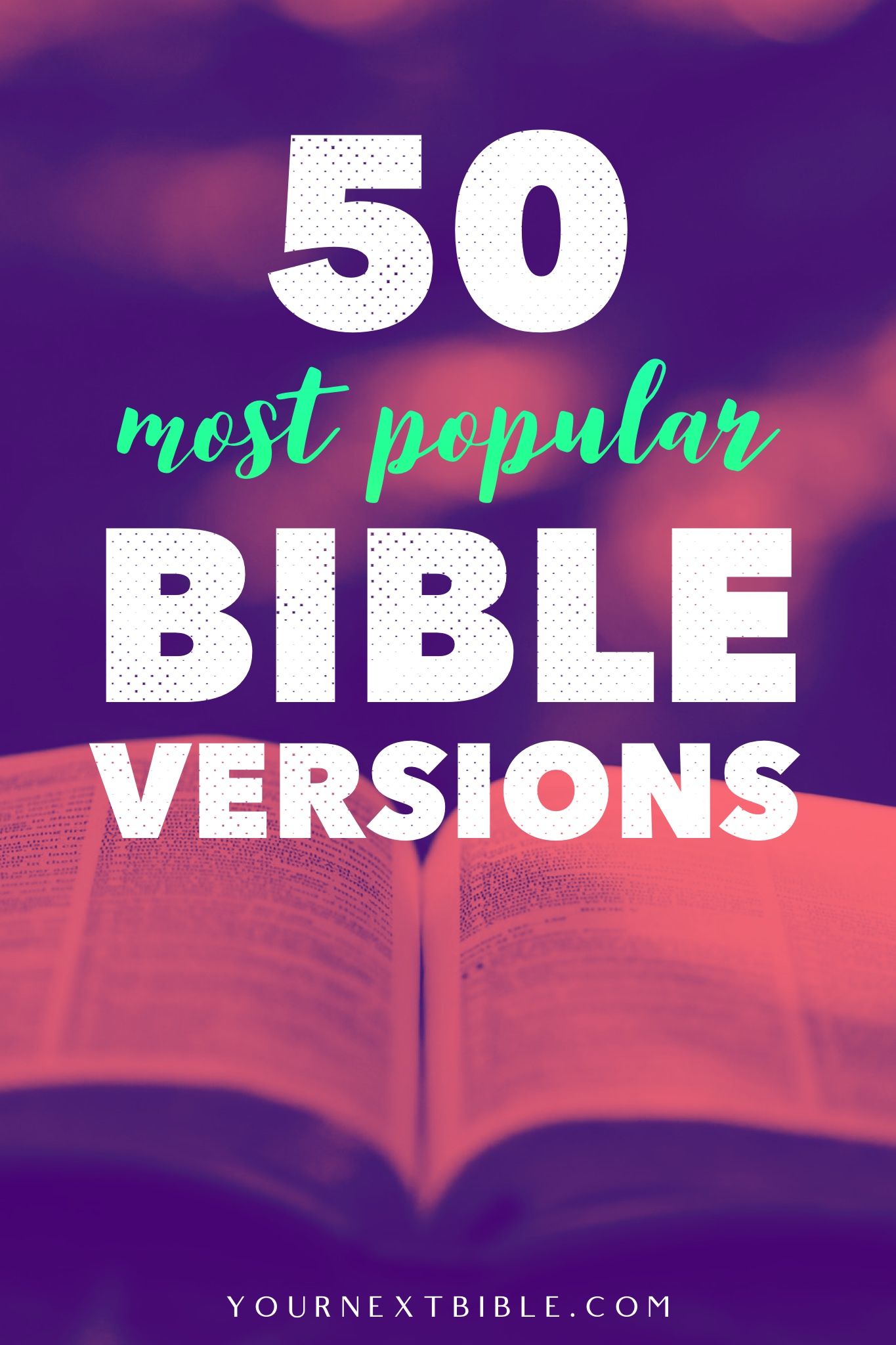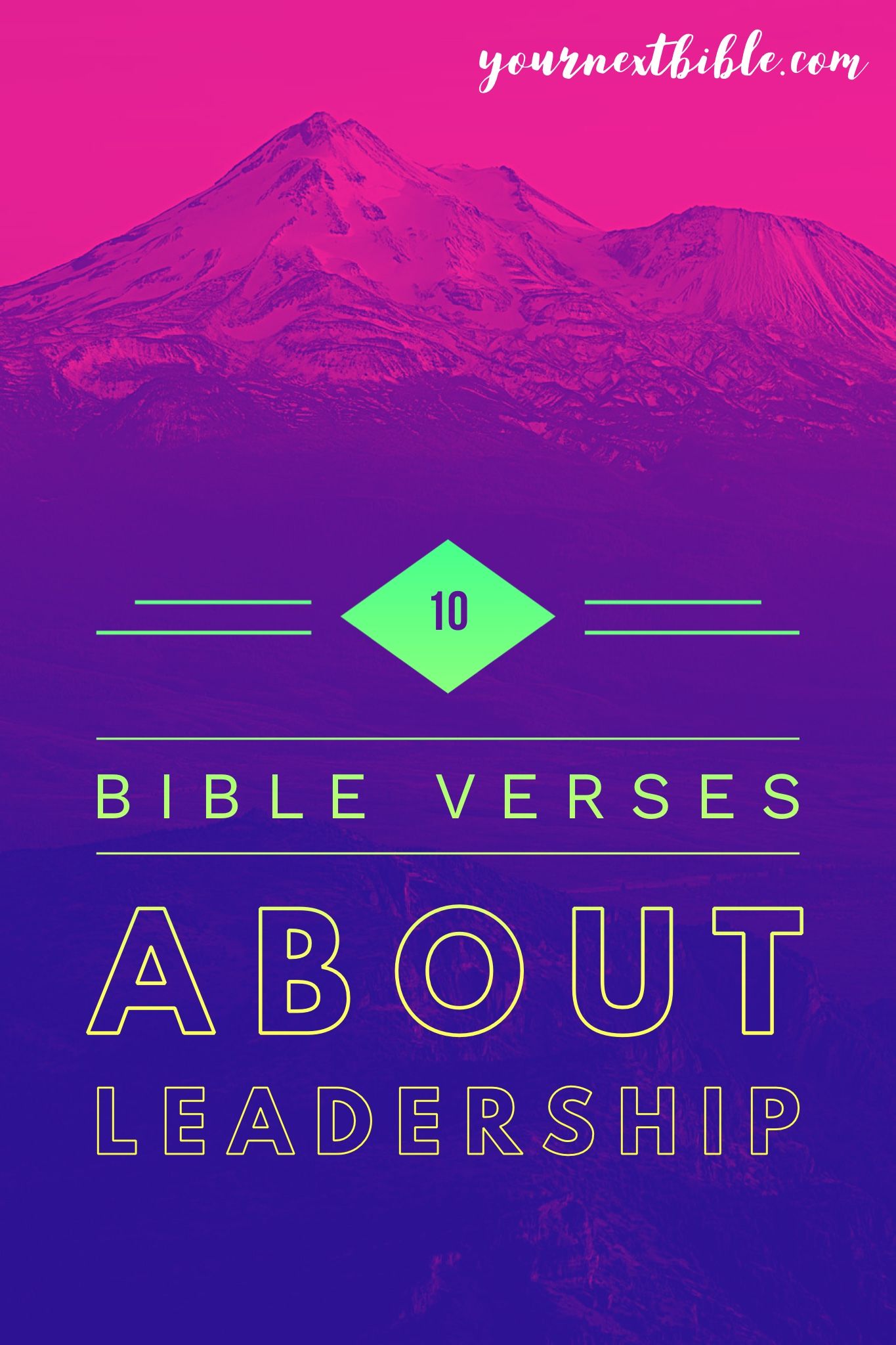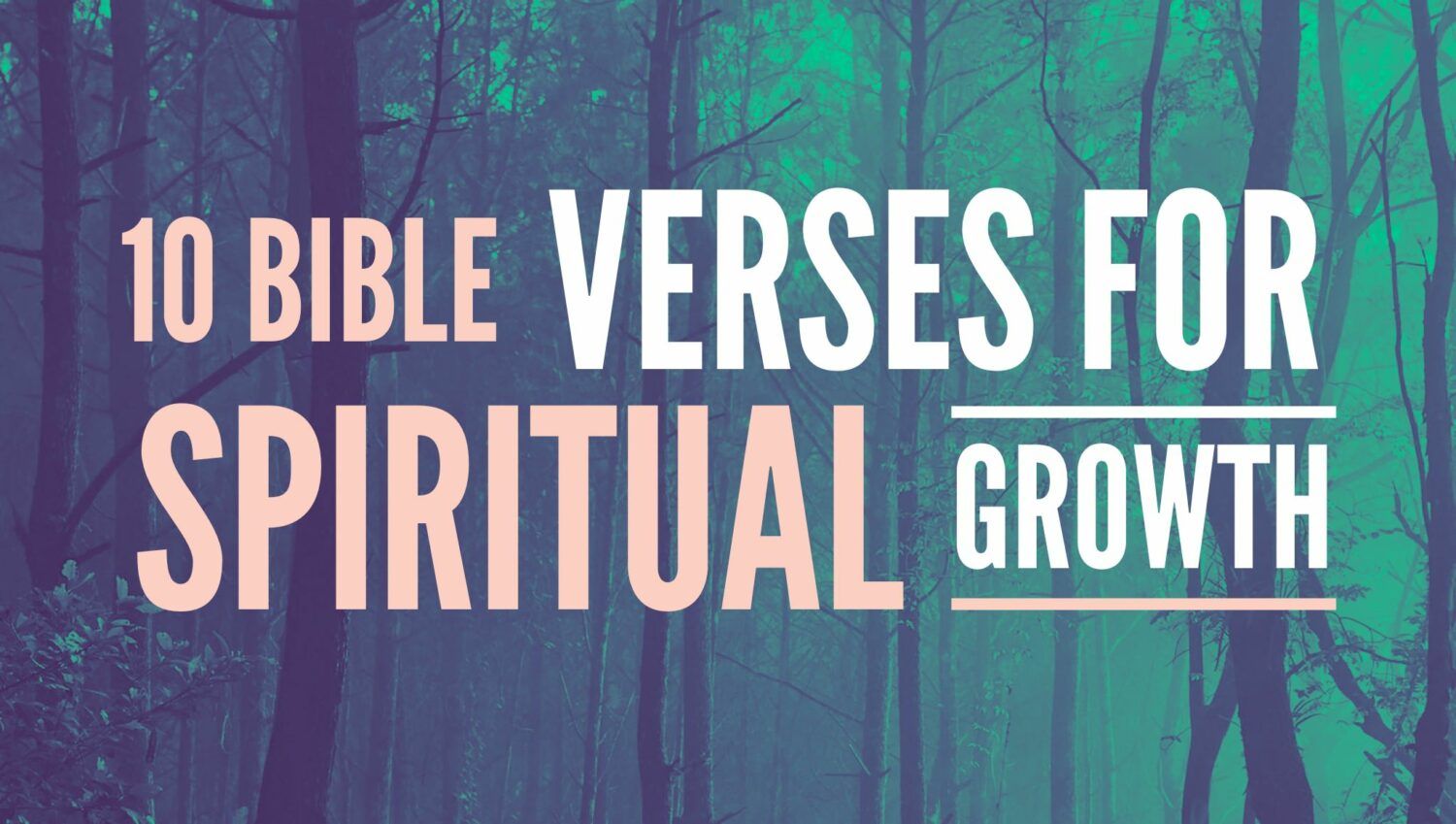An Overview of Bible Versions

There are many Bible versions, so many. As a matter of fact, in just the English Language alone, there are hundreds of versions. In addition to that, the bible has been translated to date in more than 2000 languages.
Each version of the bible is designed for a different audience and a different kind of reader. You will find versions that have literal translations as well as those that offer a thought for thought presentation.
There are a couple of bible versions that are widely respected and accepted such as the New International Version and there are those that are very contemporary and readable such as the New Living Translation.
While the terminology or cadence of each version may differ, the Bible still features the same stories throughout and can help bring readers closer to God.
There are three different types of bible versions;
- Word-for-Word Translations
- Meaning-to-meaning or thought to thought
- Paraphrased
Typically, you can tell what type of version a Bible is by reading the introductory pages.
The word-for-word versions of the Bible follow the Aramaic, Greek and Hebrew texts. The KJV and the NKJV are both considered to be word-for-word translations.
Meaning-to-meaning bible versions have the benefit of being easily understood. For example, the New International Version is a meaning to meaning version and it does better at clearly explaining points than the New King James version.
This type of bible version helps to convey a clearer meaning when it comes to ancient idioms and figures of speech that don’t often make sense in our modern language. Other popular meaning-to-meaning translations are the New Living Translation, The Good News Bible and The Revised English Bible.
Paraphrased versions of the bible include The Message Bible and The Living Bible. These versions serve the purpose of making the Bible easier to read in modern English. These versions are good for assisting in grasping the flow of a story and to better understand the characters.
50 Most Common Bible Versions
While we can’t cover all Bible versions in this article, if you want to know more about the different available versions and how they differ, keep reading.
The American Standard Version – ASV
This version of the bible is also known as the Standard American Edition. This is a revised version of the Kings James Version which was completed in 1885 and then edited by the American Revision Committee in 1901.
The English Standard Version – ESV
This version of the bible is a relatively new one. It offers great readability along with the word for word precision and not to mention accuracy. It represents a literal plain English translation of the bible that was created by over 100 of the world’s leading evangelical scholars.
Bibles we’ve reviewed include:
The New International Version – NIV
This version of the Bible provides readers with a balance between a thought for thought and a word for word translation. Many consider this translation of the bible to be one of the easiest to read and one of the most accurate versions printed in modern English.
Bibles we’ve reviewed include:
The King James Version – KJV
This version of the bible was the first version that was commissioned by King James I of England and authorized by the Protestant church. Authorized in 1604, this version was completed in 1611. This version has had a very great influence on biblical literature since becoming available.
The New Kings James Version – NKJV
In this version, the original Kings James Version gets a modern language update. The traditional sentence structure and interpretation of the KJV are upheld but this version is said by many to be easier to read and follow.
The NKJV was commissioned in 1975 by Thomas Nelson Publishers. It took 7 years for this modern translation to be created. The translation maintains its faithfulness to the Hebrew, Greek, and Aramaic original texts and it was revised with the most recent textual, linguistics and archaeological studies at the time of commissioning.
The New Living Translation – NLT
This version uses modern English and focuses on producing clear text. It does not provide a word for word literal equivalent translation but makes for a very readable translation. This Bible version remains to original texts and is a good choice for those who want to have a better understanding of difficult Bible translations.
The Common English Bible – CEB
This version of the Bible was created to provide a comfortable reading level. It substitutes traditional terminology with more modern and natural wording. This makes this bible easy to understand for English speakers at varying levels of proficiency.
The Douay-Rheims Catholic Bible – RHE
This version was created to uphold the Catholic tradition during the time of the Protestant Reformation which was the dominant Elizabethan religion. The complete Rheims text and notes were collated by William Fuke in 1589. This version was created in support of the Counter-Reformation. The New Testament of this version was reprinted in 1600, 1621 and 1633. This version was widely sold in England and up to 1633, it was re-issued in another 3 versions. The New Testament Rheims had a significant influence on the development of English in the 17th Century.
Included in this bible version is the Apocrypha which is the 7 Deutero-Canonical books.
The New American Standard Bible – NASB
This version of the bible is written in a formal style and is considered and respected as being the most literal English translation of the Bible. The version maintains verb tenses to keep the meaning as close as possible to the original Hebrew and Greek texts. The most recent update of the text was done in 1995 and allows for smoother reading and a better understanding.
The God’s Word Translation – GW
This version makes the text more readable and more reliable. The original text is translated into everyday language and is clear. This version was first produced in 1995 in Cleveland Ohio by the Nations Bible Society. The team included Luthern Church-Missouri Synod members. They wanted to create a bible version that would be a naturally equivalent translation.
The Good News Translation – GNT
This version was originally published by the American Bible Society in 1976. It is also known as the Good News Bible – GNB. It uses everyday language that is simple enough for even children. As such it is a very popular option for kids.
This is a multidenominational translation published by HarperCollins and with several different editions.
The New Living Translation – NLT
This bible version uses the modern English language. It is not a word-for-word equivalence but rather it is translated to provide clarity on the meaning of the text. This version aimed to provide the reader with a translation that is easily readable and clear while remaining faithful to the meaning of the original text.
The Holman Christian Standard Bible – CSB
The Holman Christian Standard Bible is an extremely readable version that is written in modern English. Holman Bible Publishers is one of the oldest Bible publishers in America and as such this version is trusted and used for many who want an easier understanding of the scriptures in a version that maintains the biblical accuracy.
The New Revised Standard Bible – NRS
This version of the Bible is quite a popular one. This translation is similar to the King James Version as well as the Revised Standard Version. The main goal of this translation is to preserve the older versions of meanings while incorporating the use of modern English to provide users with better readability.
The Jubilee Bible 2000 – JUB
This version has quite an interesting history. In 1530, the material was translated from Spanis to English thanks to Russell M. Stendal. This translation was compared to the Old English Translation of William Tyndale. It was also compared to the Plougboy Edition of the New Testament in 1534. In 1537 it was also compared with Joshua to Chronicles and the book of Jonah.
This Bible was first translated from the original Greek and Hebrew texts to Spanish in 1569 by Casiodoro de Reina. It was completed based on the 1543 New Testament of Francisco de Enzinas, the 1556 New Testament and in 1557 with the Psalms of Juan Perez de Pineda. In 1611 it was a word for word translation compared with the Authorized Version of the time which was the King James Version.
The Revised Standard Version – RSV
This translation is a mix of three versions. The versions used in this translation include the King James Version and the Revised Version alongside the American Standard Version. This translation of the Bible can be used both for public and private worship and reading.
The Message Bible – MSG
This Bible version is a paraphrase version. It is written from the original languages and was authored by Eugene, H. Peterson. It took Peterson 9 years to complete this translation. Inspiration for the Bible was for it to be a literal translation and sort of a companion bible and not so much a scholarly work. The reader experiences a unique and fresh Bible reading when they pick up a version of the Message Bible.
The Lexham English Bible – LEB
The Lexham English Bible is a great choice for looking at the word of God from a completely new angle. It is written so that it can complement ay primary translation very well. It offers literal rendering and transparent design that will make it a great choice for anyone who wants a Bible for cross-referencing in times where a primary translation may not be offering the most clarity.
The Bible in Basic English – BBE
The Bible in Basic English is authored by Mr. C. K. Ogden from the ORthological Institute. This bible version of the Bible is rendered in basic English. Basic English is the simplest form of the English language with a list of approximately 1000 words.
This Bible translation was completed under the direction of a Committee including Old Testament Studies Professor Emeritus from the University of London and Professor S. H. Hooke. This translation of the Bible was produced from the original Hebrew and Greek texts into basic English.
The Bible was put together with the latest discoveries and ideas. Upon completion, the Bible In Basic English was gone over by a Syndics of the Cambridge University Press formed Committee. This was done before this version of the Bible being published and released to the market.
The Webster Bible – WBT
The Webster Bible contains both the Old and the New Testaments in a common version. There are amendments to the Language done by Noah Webster, LL. D.
The version of this Bible that is currently in use was initially published in 1611 during James I reign. There were alterations made in the language of the former versions but no part is the same as the version which was prevalent during the reign of Queen Elizabeth.
The present version of The Webster Bible includes language that is correct, general and perspicuous. It is written in the English language of genuine Saxon origin. The text is adapted to the subjects peculiarly with many passages showing unity between simplicity and sublimity quite beautifully.
The Twentieth Century New Testament – TCNT
The TCNT translation was first published in 1901 and then revised in 1904. The translation made use of the Greek New Testament by Westcott and Hort, the 1881 edition. It is from this edition that the TCNT was created to provide young people of the time with a plain English version of the Bible. It was designed to be easier to read for its target population.
The New Testament in Modern Speech – NTMS
This translation of the Bible was first made public in 1903. It was translated by Richard F. Weymouth – a Greek scholar. The translation makes use of contemporary English language while paying attention to the originality of the Greek language by using the same verb tenses and definite articles.
The Worrell New Testament – WNT
This translation was done by A. S. Worrell in 1904. It is a moderate revision of the American Standard Version. Worrell makes this version different by rendering the participles and verbs more literal than that of the American Standard Version.
The Thompson Chain Reference Bible – TCRB
This translation was done in 1908 by Frank C. Thompson. It is a study bible designed with a chain linking system of topics. It includes more than 4000 chains of reference along with comprehensive help from the Bible. This study bible is quite popular thanks to how it references Bible texts with topics. This translation has been a very successful one with sales exceeding 4 million copies.
The Scofield Study Bible – SSB
This translation is an annotated Bible created by Cyrus Scofield. It was initially completed in 1909 and later revised in 1917. Annotations are done with commentary around the text and there is no separate volume. The study Bible also includes a unique cross-reference system.
The New Translation of the Bible – MNT
The Moffatt’s New Translation was first started in 1913 when it was just the New Testament. The Old Testament was added in 1924 and then the Bible was officially completed in 1928. The version has some unique expressions that deliver the meaning of a passage with a lot of clarity. The liberties taken by Moffatt in his translation have shocked many but this version is thought to be one of the most lasting versions when it comes to readability.
The Bible: An American Translation – AAT
This translation was completed in 1935. Edgar. J Goodspeed initially translated the New Testament in 1923 and called this The New Testament: An American Translation. He aimed to provide a bible that was free of British English expressions. He added the Old Testament: An American Translation in 1935 and 1938 also added the Apocrypha.
The New Testament in the Language of the People – NTLP
The New Testament in the Language of the People was produced by Charles B. Williams in 1937. This translation is an amplified working of the New Testament. Delicate Greek verb tenses were given fuller meaning in this version of the Bible.
The Knox Bible – KNOX
Ronald Knox is an English priest who was commissioned in 1940 with the task of translating a new version of the Bible for Catholic readers. During this era, all Catholic Bible versions needed to be based on the Latin Vulgate. However, in this translation, Knox ensured he paid attention to both the Greek and the Hebrew. The New Testament was completed in 1945 and the Old Testament was completed in 1949. A newer version of the Knox Bible was completed in 2010.
The Daily Study Bible – DSB
This Bible was translated by William Barclay. He did this translation to make the Bible easier to read for the average reader. The University of Glasgow professor included 17 commentaries along with his translation of the Bible to provide the average reader with the best Biblical scholarship.
The New Testament in Modern English – NTME
This translation was completed in 1958 and is a paraphrase version of the J.B Phillips’, The Phillips New Testament version. In 1972, a revised edition was released but most people prefer the original version from 1958.
The Wuest Expanded Translation of the New Testament – WET
This translation was completed in 1959 by Kenneth S. Wuest. Wuest was a New Testament Greek professor at Chicago’s Moody Bible Institute. He translated an amplified version from 1956 to 1959. Wuest worked to expand the meaning to all parts of speech from the original Greek text. This makes the WET Bible a very good resource.
The Berkeley Version in Modern English – BV
This translation was completed in 1959 and is a version that is complete with modern English. It is extremely easy to read and has all the relatable language for a better understanding of the scriptures.
The Dake Annotated Reference Bible
This study Bible was completed in 1963 by Finis J. Dake. It took Dake 7 years to complete the Bible as it includes more than 35,000 personal notes and commentary.
The Amplified Bible – AMP
This Bible translation was completed in 1965. This Bible translation includes words in the text that one would usually find in the footnotes and margins. By this expansion of the text, the author attempts to add meaning to the text right there so the reader has the information right there. This makes the AMP version a good resource for someone who wants an in-depth yet simple Bible.
The Jerusalem Bible – JB
This Bible translation was initially a translation in French. The English version was created in 1966. The English translation was done from the Hebrew and Greek texts, there was some consultation with the French version, however. This English version is a Catholic version that has several opinionated notes along with advanced literacy skills in scholarly production.
The New American Bible – NAB
This translation of the Bible is a revised version of the Douay Bible which was created with American Catholic readers in mind. The translation was done from Greek, Hebrew and Latin Vulgate texts. The end product became available in 1970.
The New English Bible – NEB
This is a British translation that was produced in 1970. The NEB aims to be a thought for thought translation. It does, however, borderline on paraphrasing in several places in the text. The same Greek or Hebrew word is rendered with different English words in some instances. Due to this, detailed word studies may be hard for those who cannot use original Greek or Hebrew texts.
The New American Standard Bible – NASB or NAS
This is one of the Bible versions that provides the most literal translation in a word for word form. It is known to be accepted as highly accurate as it uses some of the most modern translations. This Bible translation was produced by a translator group that consisted of 54 scholars. It took them 11 years to complete the translation, making it one of the most dependable one’s available today.
The Living Bible – TLB
The Living Bible is a paraphrase version. It was created from the American Standard Version by Kenneth N. Taylor. Taylor aimed to put the Bible in a language that could be easily understood by kids. This interpretation is very contemporary and highly readable. As such it is quite popular having sold over 40 million copies. To top it all off, sales proceeds of The Living Bible go to charity.
The Hebrew-Greek Key Study Bible
This is a study Bible version that was developed by biblical language scholar; Spiros Zodhiates. The study bible contains several added text to enhance the readers’ experience. These include Lexical aids, grammatical notations, footnotes and a very strong concordance complete with reference numbers. It is an ideal tool for persons looking to delve into the bible’s original languages.
The Revised English Bible – REB
The latest version fo the REB was made available in 1989. It was created with a free translation revision of the 1970 NEB. The translators are liberal with the text and the version is primarily translated in British English.
The New Revised Standard Version – NRSV
This is quite a unique Bible version. The NRSV was made available in 1990. It eliminates archaic language and presents a gender-neutral approach by replacing masculine gender forms.
21st Century King James Version – KJ21
This is one of the newer Bible versions, this became available in 1994. It is a formal version with a literal translation. This Bible translation is a minor update of the KJV. The language is not altered significantly but some vocabulary is replaced to allow the text to make better sense to modern readers.
The Contemporary English Version – CEV
The CEV was first published in 1995 by the American Bible Society. This is a plain English version that makes it suitable for people who are reading at a lower reading level than average.
The Holman Christian Standard Bible – HCSB
This Bible translation was produced in 2004 and provide a balance between a word for word translation and a thought for thought translation. The translation scrutinizes ancient texts on every level including sentences, phrases, clauses, and words. As such the original meaning, as well as intention, are kept in easier to read the wording. In short, it is a modern and accurate version.
The Today’s New International Version – TNIV
This translation is functional and a freestyle revision of the New International Version. You can call it the more literal version of the NIV. It took ten years to finish and was completed in 2005. The translation was provided by a team of over 50 scholars.
The New English Translation – NET
The NET translation is a literal translation that is completed with formal English. This version was made available in 2005 and was among the first Bible to be available on CD-Rom or the internet free of cost to users. This Bible is packed with footnotes and can be downloaded free of cost online there is a printed edition of the NET Bible as well.
There are countless versions of the Bible available in multiple languages and we aim to spread the word of God to every “nation, tongue and tribe”. This list is by no means close to complete but does offer a number of the more popular Bible versions available to English speaking readers today.



